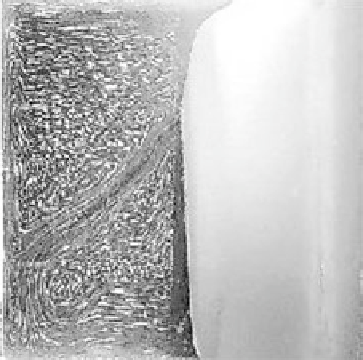Information Technology Reference
In-Depth Information
Fig. 12.6
Picture of the
experiment
Fig. 12.7 Example of an
image representation
Image segmentation is the process of partitioning an image into meaningful
parts [
2
]. Segmentation techniques can be thresholding, boundary detection, or
region growing.
In the thresholding process, generally it used the analysis of pixels grayscale
frequency (histogram) to determine a threshold (l) parameter (Eq.
12.13
). The
image result is a new one I(x,y)[
20
].
I
ð
x
;
y
Þ
¼
0
;
f
ð
x
;
y
Þ
\l
ð
12
:
13
Þ
255
;
f
ð
x
;
y
Þ
l
This method can achieve good results in images with bimodal histograms
(Fig.
12.8
), different from the example image histogram shown in Fig.
12.9
, where
there is no two noticeable picks. In bimodal histograms case, it is simple to choice
a threshold parameter l to segment the two different regions in an image. However,
the method of amplitude threshold is not a good procedure in many cases, as can
be seen in Fig.
12.9
. The reason of this bad result is the fact that the luminance
isn't a distinguishable feature for water and ice in this particular example.


Search WWH ::

Custom Search